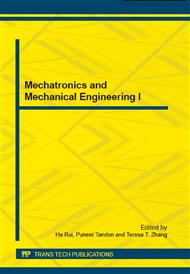p.298
p.304
p.313
p.318
p.326
p.331
p.336
p.341
p.349
Stability Analysis of the AC Filter Capacitor Structure
Abstract:
In the UHV DC transmission engineering, mechanical strength and reliability of the capacitor structure is the premise to resist natural disasters such as earthquake or fierce wind. However, there are some unreasonable design problems or phenomena in which the structural strength and stiffness can not meet the structural stability requirements. In this paper, by using Solid Works software, the solid models of the capacitor structure with tilting layer and without tilting one are presented respectively at first. And then, the dynamic simulations of the structure are carried out by means of finite element method, that’s the numerical simulation software WORKBENCH module in ANSYS and meanwhile the stress value changes of some models are compared and discussed. At last, the results show that the stability of the structure with sloping layers is no better than the one without sloping layers. This paper provides some references for designing the capacitor structure with good stability and low production cost.
Info:
Periodical:
Pages:
326-330
Citation:
Online since:
October 2014
Authors:
Keywords:
Price:
Сopyright:
© 2014 Trans Tech Publications Ltd. All Rights Reserved
Share:
Citation:


